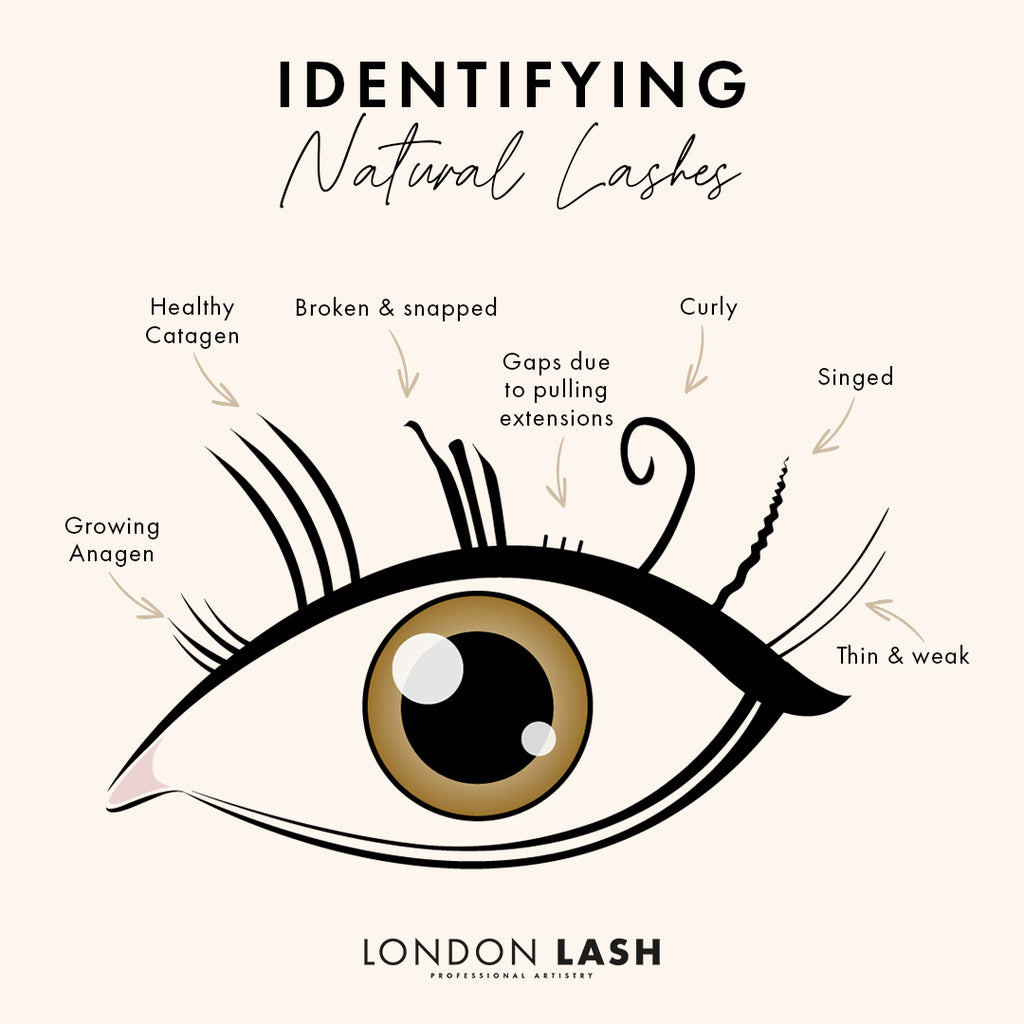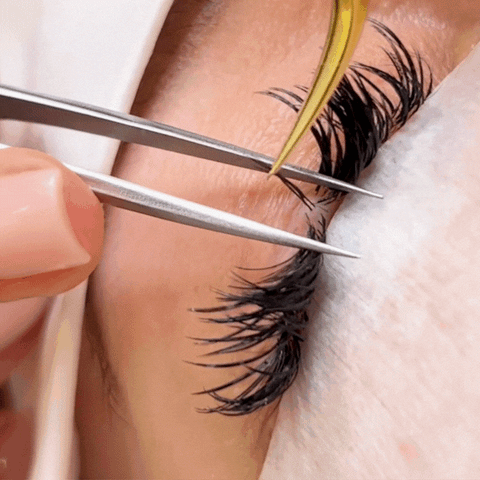FREE STANDARD SHIPPING FOR ORDERS OVER $170!
FREE STANDARD SHIPPING FOR ORDERS OVER $170!
New In
Glues & Liquids
Ebooks

Lash Extensions for Weak Lashes: Tips and Tricks
March 09, 2024 3 min read
Can You Even Lash Weak Natural Lashes? You Can If You’re Careful!
Do you ever feel anxious and hesitant when faced with a client who has thin, brittle, or sparse lashes due to prior damage? If so, you're lashing right! It requires a high level of skill, patience, and understanding of lash health to ensure that further damage is not inflicted. It also involves knowing when to say no – here are our tips to equip you with the knowledge and confidence to tackle these challenging lashes effectively, ensuring that clients leave feeling their best without ever compromising the health of their natural lashes.
Assessing the Condition of Damaged Lashes
The first step is a thorough assessment of the client's natural lashes. This evaluation is crucial to determining how you can even go about applying extensions. If you encounter lashes that are brittle, sparse, or showing signs of damage, you absolutely have to exercise caution.
In some cases, it might be necessary to advise the client to postpone the eyelash extension appointment until their natural lashes have recovered to a healthier state. This approach will not only protect the client's lashes from further damage but also builds trust, as it shows that you prioritize their well-being over business.

Choosing the Right Extensions
If you’re applying eyelash extensions to weakened lashes, selecting the right type of lash extensions is even more important than usual. Firstly, think thin – finer eyelash extensions are king here as they will allow you to create volume fans to cover gaps while also keeping those lashes safe. We recommend up to 2D fans using 0.07, no more than 4D in 0.05, or Classic Lashes with a maximum thickness of 0.12. Consider too that flat lashes weigh only around half as much as a regular classic lash in the same thickness, so if a client comes to you asking for more of a wet lash look, you can make them very happy with flat lashes without adding any extra weight.
Once you’ve selected your thicknesses, it’s important to consider length. While eyelash extensions taper at the tips, they will still add extra weight the longer they are. A plus point to using shorter lashes is that they naturally create a more dense lash line, so will naturally look more full, even if you have a few gaps or unlashable (yes, that’s definitely a word) lashes to contend with.
Application Techniques
You will most definitely need to adjust your technique when working with damaged lashes. For instance, while it's advisable to avoid applying extensions to baby lashes, there may be instances where filling in gaps is necessary for a full look. In these cases, strategically applying a few very light fans or classic lashes can bridge these gaps effectively without causing damage. If you do have to apply an extension to a baby lash, it’s essential to book the client in for a lash fill in 2 weeks maximum to ensure that you can monitor the growth and health of these delicate lashes.
The application process itself should be approached with utmost care, using the correct amount of glue and dedicating additional time to check for any stickies. This meticulous approach ensures that each extension is applied safely and securely, minimizing the risk of damage.

Aftercare and Maintenance
Post-application, scheduling follow-up appointments every 2-3 weeks is crucial. As much as a lash fill allows you to fill any gaps in the lashes and keep the set looking full and fluffy, it also allows you to take note of the natural lashes' growth, replace the extensions, and avoid putting strain on the natural lashes as they grow out.
Educating clients on proper aftercare practices is equally important. Avoiding harsh rubbing, refraining from picking at the extensions, and daily use of a cleansing lash shampoo are all practices that contribute not only to the longevity of the lash extensions, and the health of the natural lashes. Providing clients with this knowledge empowers them to maintain their lash health between appointments.
Dealing with damaged or weakened natural lashes requires a thoughtful and skilled approach, and sometimes you will simply have to say no while your client’s lashes recover and come back to their natural, healthy state. Remember that safety always comes before aesthetics, so always ensure that you are doing whatever is necessary to keep your clients’ lashes safe and healthy, so that they can enjoy lash extensions for years to come.
Subscribe
Sign up to get the latest on sales, new releases and more …

























